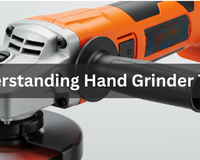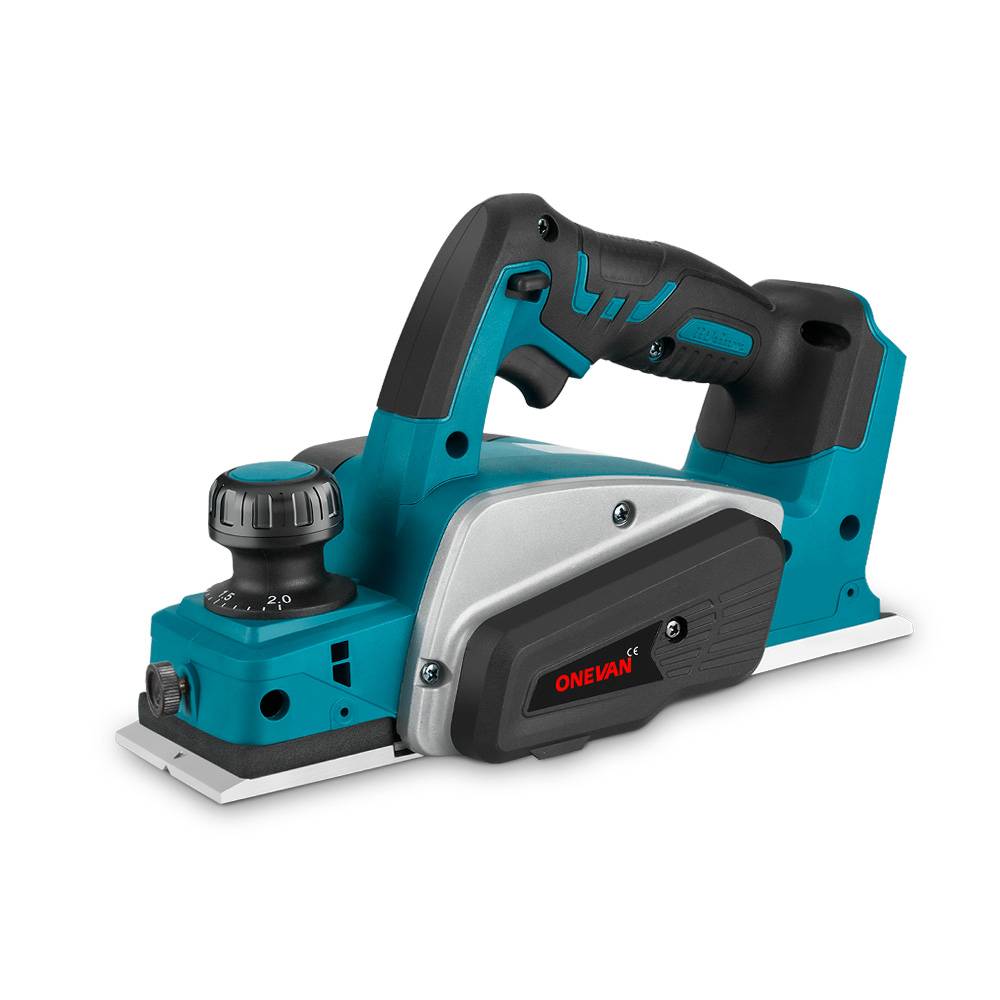Famed for its outstanding precision and versatility, the jigsaw is regarded as the instrument of choice for woodworkers and DIYers—so, how effectively does it perform on metal? Can a jigsaw cut metal? Yes, absolutely. Equipped with the proper blade and used under the watchful hands, a jigsaw can cut a wide variety of metals, including undersized aluminium, steel, sheet metal, and even corrugated roofs.
While jigsaws are famed for their meticulous wood-cutting ability, the combination of skilled techniques and thoughtfully selected accessories makes them a potent instrument for an array of metal-cutting applications. Whether it is for custom shelving made from metal pipe that needs to be cut to an exact shape, trimming a sheet of metal roofing, or just cutting metal trim accordingly at a nice, even rate, there is no other tool that is as precise and controllable on the task as a jigsaw.
Its flexibility elevates the jigsaw to the rank of a workshop necessity, making it a powerhouse capable of cutting through a wide variety of materials. Familiarity with the specifics of cutting metal with a jigsaw can open up new possibilities in projects that don't require heavy-scale machines. What do you think, will a jigsaw cut metal? Keep reading to dig the truth.
How to cut metal with a jigsaw
Which jigsaws, and which jigsaw blades, are best suited for cutting metal?
- Detailed cutting guidance
- A standard array of common mistakes you ought to avoid.
- Every response to the most frequently asked questions
You’ll also find that a top-tier, cordless device such as the ONEVAN 135mm Brushless Cordless Jigsaw can make metal cutting safer, smoother, and more convenient for beginners as well as for seasoned professionals.
1. Types of Jigsaws for Metal Cutting
Choosing between a corded jigsaw, a cordless jigsaw, a pneumatic jigsaw, or a hydraulic jigsaw significantly impacts cutting performance and the quality of the finished cut. What do you think can jigsaw cut metal, and which type will be more effective?
Corded Jigsaws
Features:
Drawing their power directly from an electrical socket, corded jigsaws are well prepared for prolonged cutting sessions. With a powerful motor, consistent RPM, and excellent torque, these jigsaws become a must-have when cutting through thick materials like steel.
Usual Applications in Metal Cutting
- Employing a jigsaw to cut sheet metal
- Performing the trim on aluminium flashing or baseboards.
- When the task is to cut thinner metal pipes, a bi-metal blade is the tool of preference.
Owing to their steady, unwavering power, they continue to be the tool of preference for demanding or repetitive metalwork.
Cordless Jigsaws
Features:
The cordless jigsaws, which are handheld, are usually supplied by manufacturers with lithium-ion batteries, e.g., the ONEVAN Brushless Cordless Jigsaw. These jigsaws will bring in mobility, maneuverability, and other conveniences to work in limited or distant spaces.
Typical Applications in Metal Cutting
- Trimming metal roofing by stepping onto the roof or while mounting on a ladder.
- It further enables swift, portable cuts on plumbing and electrical jobs.
- Work on sheet metal is executed in garages or on mobile workshops.
The cordless jigsaw from ONEVAN offers finer control, allowing for blade changes without tools, speed adjustments, and reduced vibration, resulting in smooth and easy cuts on metal without hindrance.
Pneumatic Jigsaws
Features:
These compressed-air jigsaws are commonly preferred in industrial settings due to their lightweight design, rapid response time, and ability to make clean, straight cuts. They excel at creating clean, straight cuts, thanks to their lightweight design and immediate responsiveness.
Typical Applications in Metal Cutting
- Cuts in vehicle panels
- Serving the modification of aerospace components.
- Construction assembly lines.
The tools are most frequently placed in workstations that secure an uninterrupted supply of compressed air and where the prominence of walkability is minimal.
Hydraulic Jigsaws
Features:
Designed for stringent heavy-duty tasks, hydraulic jigsaws drive through hydrostatic power and readily tackle materials that are exceptionally thick and heavily reinforced.
Common Applications for Metal Work
Shipbuilding
For example, in rescue operations, the operation involves cutting through the vehicle chassis.
Industrial demolition
While not commonly used in DIY projects, they are essential tools in specialized industrial applications. It is the motor alone that cannot claim credit for a jigsaw's metal-cutting ability; in fact, the responsibility rests chiefly with the blade. The correct blade reduces friction, increases precision, and reduces wear.
2. Choosing the Right Jigsaw Blade for Metal Cutting
Jigsaw Blade Specifications for Metal Cutting
Tooth per inch (TPI)
- 18-20 TPI: Blades rated at roughly 18–20 TPI are particularly effective for cutting steel or aluminium that measures about 1–2mm in thickness.
- 10-14 TPI: Your ideal choice when you want to cut thicker pipes and metallic plates
- 6 -10 TPI: when taking careful cuts through metal roofs or corrugated metal
A higher TPI produces crisper cuts, yet the heightened grain pattern on the metal produces a markedly rougher finish.
Tooth Configuration
Wavy-set teeth: Thanks to their distinctive shape, they perform exceptionally well when cutting sheet metal, reducing the risk of snagging during the cut
Milled Teeth: Whereas milled teeth cut powerfully, they also overheat more rapidly.
Ground Teeth: Choose the corresponding TPI along with the best tooth profile, which is adapted to the specific piece of metal you are going to cut.
Jigsaw Blade Specifications for Metal Cutting
Bi-Metal Blades
Description:
Concentrated into two distinct metallic components—an elastic carbon-steel shaft sheathed by a layer of high-speed steel teeth.
Applications:
- Able to handle sheet metal, galvanised steel, and metal studs.
- Manufactured for consistent metal-cutting duties, it likewise demonstrates outstanding long-term reliability.
High-speed steel (HSS) blades
Description:
High-Speed Steel (HSS) blades, recognized for their strength and heat resistance, are suitable for cutting hardwood, metal, and plastic. They stay sharp for longer than regular steel blades, keeping consistent performance.
Applications:
- Suitable for metals including aluminium, brass, copper, and light steel.
- The blade alone is precisely strong enough to make precise cuts during HVAC or roofing applications.
Carbide-Tipped Blades
Description:
They demonstrate remarkable hardness and show resistance to not only abrasion but also high heat.
Applications:
- Best suited to work with stainless steel, cast iron, and rebar.
- Employed in commercial settings that span industrial facilities and remodelling environments.
Specialty Blades
Description:
On the list are specialty blades—such as reverse-tooth, scroll, and dual-cut varieties.
Applications:
- Owing to its reverse-tooth configuration, the cutting edge delivers a smoother finish.
- Scroll blades are significant when it comes to elaborate metal art and tailor-made signs.
- Dual-cut blades are designed to ease through multiple-ply panels of metal and insulation.
3. How to Cut Metal with a Jigsaw
Cutting metal calls for more precise control than is needed when sawing wood. Using a jigsaw for metal cutting can be both secure and efficient when proper techniques are applied.
Step 1: Gather all the necessary tools and materials.
You’ll need:
On the list of required tools, a variable-speed jigsaw—preferably—should be included.
Pick a blade up to the challenge: checked for the optimal TPI and crafted from the appropriate material—for example, bi-metal or HSS.
Clamps
- Safety necessities such as protective gloves, safety goggles, and earplugs
- Aerosol cutting oil or other types of lubricant suitable for metal cutting.
Marking tool
Make certain a ruler or square is close at hand. To ensure top-level efficiency, jigsaws such as the ONEVAN allow fast blade switches and feature an array of cutting-speed settings that shorten setup time.
Step 2: Prepare the workspace.
- Place the metal on a non-vibrating surface.
- Keep the material well secured to ensure stability during the cutting process.
- Sketch the cutting out line with a straight edge, and where needed with a curve guide.
- Ensure the workplace is well lit and well ventilated.
Ensure that you do not leave any flammable objects nearby, especially when cutting metals that are prone to sparking.
Step 3: Go Ahead and Make the Cut
Jigsaw Cutting Methods
- Cut Low: Start with a low cutting speed, especially while you are becoming familiar with the tool, allowing the blade to cut slowly and steadily.
- Trust the Blade to Cut: Avoid forcing the jigsaw unnecessarily, because that can overheat the blade.
- Lubricate the blade by fluidic means: Apply a spray of cutting oil along the blade edge to lubricate the blade and reduce friction during the cutting process.
- Changing the angle and keeping steady: Always maintain your plane parallel and refrain from tilting; that produces an uneven cut.
- Stop to cool. When cutting thick metal, take a rest every few seconds to allow the blade to cool down.
Step 4: tidy up and clean.
- Deburr: Drag a metal file, or any other means of removing burs, over the surfaces of any cuts to remove burs.
- Clean your Tool: Wipe a rag over your jigsaw and make sure that the exhausts are free of metal particles.
- Hence, examine the Blade: Check for warping, dullness, or clogging.
- Lube Jigsaw: Spray the moving components with a light mist of oil whenever need arises.
4. Common Mistakes When Cutting Metal with a Jigsaw
a ) Selecting an inappropriate Blade
Mistake: Employing blades not designed for metal cutting, such as wood blades or general-purpose blades.
Impact: Wood or general-purpose blades might cause swift wearing, rough edges, overheating, and even breaking the blade, affecting safety and the quality of the cut.
b ) Apply Too Much Force
Mistake: Applying excessive force to speed up the cutting process.
Impact: Prolonged overheating of the blade can injure the user and pose a danger of injury.
c ) Insufficient securement of the metal material
Mistake: Accordingly, failing to secure the material between each cut.
Impact: As a result, the slipping material during the cut yields cuts that are usually uneven or misaligned.
d ) Cuttings at Ultraready Speed
Mistake: Choosing the wood-cutting mode adjusted for maximum speed.
Impact: Warping and burning, shortened blade lifespan
e ) Failing to wear the necessary protective equipment.
Mistake: Failing to wear necessary protective equipment, such as gloves, protective goggles, and ear protection.
Impact: Potential results include scorching the jigsaw, the possibility of eye injury, hand cuts, or hearing damage.
f ) Failing to stay within the delineated line.
Mistake: Cutting without holding the saw steadily or tracing lines whose accuracy is not assured.
Impact: Consequently, the metal cuts often turn out uneven, and on occasion, the workpiece becomes unusable.
g ) Because of insufficient blade maintenance.
Mistake: Failure to clean or change the blades frequently
Impact: declining efficiency and an increased probability of accidents.
5. Conclusion
So, can a jigsaw cut metal? Without a doubt, it can; when used with the proper blades, tools, and techniques, it offers a versatile and effective solution for cutting metal. Working with sheet metal using a jigsaw, struggling with a bend of aluminium, or fine finishing stainless steel, a jigsaw remains constantly uniquely effective, compact, and accurate. Fueled with fast-change blades, adjustable speed, and vibration-reducing technology, battery-operated tools, such as ONEVAN Brushless Jigsaw, enhance the functionality and represent a great tool in the hands of a hobbyist or a professional. Now you should understand that a jigsaw can cut through metal, including metal roofing.
Whether you're working on metal fabrication, cutting metal roofs, or undergoing mixed-material renovations, a jigsaw fitted with metal blades will transform the way you handle your projects. Ensure that correct blade selection and safety-oriented procedures are prioritized to achieve a clean and efficient operation. The more experience you gain, the more precise your jigsaw metal-cutting precision will be, until you work faster and at a professional level.
6. FAQs
Can any jigsaw be utilised to cut metal?
Not all jigsaws are designed for metal cutting; those with variable-speed settings and appropriate blade compatibility are the most effective. Some of the most capable performers are cordless jigsaws that combine variable-speed capabilities with highly aggressive tooth-per-inch (TPI) blades, for example, the ONEVAN cordless jigsaws.
How thick can a jigsaw realistically cut?
Equipped with the proper blade, the majority of jigsaws can effectively cut through metal up to 1/8" (3mm) thick for softer metals like aluminum. While cutting thicker stocks, dial back the cutting speed and apply lubricant to the material.
What metals does a jigsaw device handle most effectively?
Yes. Examples that fit under the category of aluminum, sheet steel, copper, and metal roofing are easier to cut than the harder ones, like stainless steel.
How should I maintain my jigsaw for optimum metal-cutting?
- As soon as you clear each job, wipe off any accumulated debris.
- Regularly check the blades and rotate them as frequently as possible.
- Apply lubricant to the internal mechanisms as needed, especially after extensive use.
- To avoid rust, keep the tool in a dry location.
What other tools can be used as substitutes for a jigsaw in metal cutting?
- Angle grinder (offers quicker though coarser cuts)
- Metal shears, be they hand-powered or driven electrically.
- Plasma cutter (for heavy pieces of steel)
With a bandsaw, or by mounting a metal-abrasive blade on a circular saw
Tags :
Can a jigsaw cut metal, Cutting metal with jigsaw, Best jigsaw blade for metal, Jigsaw for metal roofing, How to cut sheet metal, Jigsaw metal cutting guide, ONEVAN cordless jigsaw, Cutting steel with jigsaw, Jigsaw metal cutting tips, Metal cutting jigsaw blade types, Jigsaw vs angle grinder, Safe metal cutting methods, Tools for cutting metal. High TPI jigsaw blades, DIY metal cutting projects









